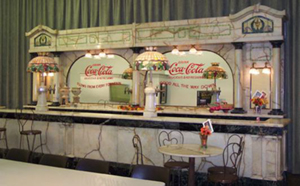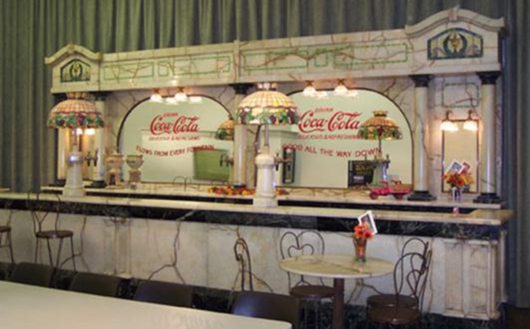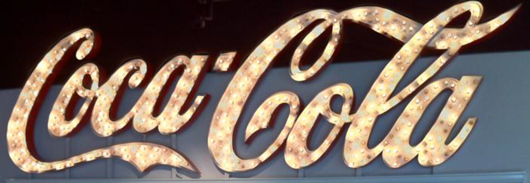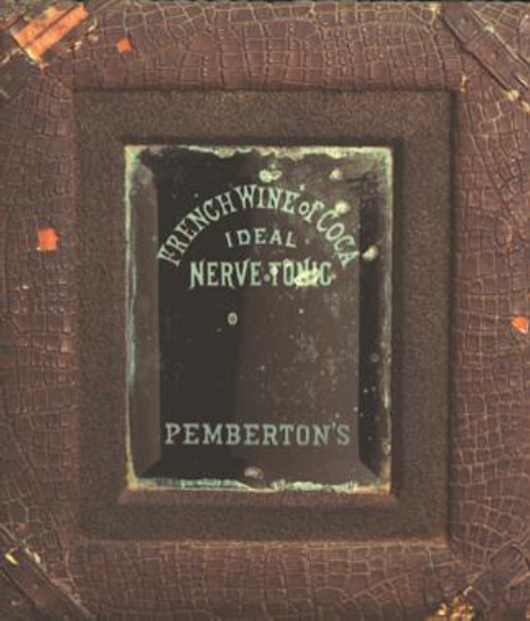
ELIZABETHTOWN, Ky. – The biggest and oldest items from the prestigious Schmidt Museum of Coca-Cola Memorabilia will be included in the museum’s next auction, which is set for March 24-25, 2012. Proceeds will go to a charitable foundation being set up by the Schmidt family.
The first auction, held in September, established a new benchmark for a Coca-Cola memorabilia sale by bringing in more than $3 million for 650 items. Several pieces went for more than $100,000 each – unprecedented for an auction of advertising art.
“A big difference between the first auction and the second is that the next will have several marquee items that appeal to more than just Coke collectors,” says Larry Schmidt, head of the family-owned museum, which is home of the largest privately owned Coke collection in the world.
Items in the next auction include a 19th century soda fountain, the side of a barn from the 1930s, large illuminating outdoor signs, rare bottles, and a treasure trove of posters, banners, serving trays, lights and toys. There’s even an 1880s mirror from the pharmacy in Atlanta where Coke’s original formula was developed. It says “French Wine of Cola – Ideal Nerve Tonic.”
The centerpiece of the auction is a soda fountain manufactured by the Liquid Carbonic Company for the 1893 Chicago Columbian Exhibition. Made of marble and onyx with exquisite veining, the soda fountain is extremely ornate. It’s actually two pieces – a customer counter and a back bar. With each piece 24ft. in length, it is among the largest items in the museum.
“This is a piece of history that goes beyond Coke memorabilia,” says Schmidt. “It could attract potential buyers from around the world.” The assessed value of the soda fountain is between $75,000 and $125,000.
Other items creating diverse appeal are large outdoor signs. One measures 14ft. tall and features yellow and white neon lights with a clock in the middle. It’s from the 1930s and was displayed at the Coca-Cola bottling plant in Piqua, Ohio. The other large outdoor sign is simply the Coca-Cola script logo made of randomly blinking lights. Described as a glitzy, Times Square-type sign, it once hung from the top of a building in downtown Asheville, N.C.
“These types of signs often appeal to car collectors, [but] with some 700 items in the next auction, it will still be the event of the year for the most avid Coke collectors,” said Gary Metz, a renowned expert on Coca-Cola memorabilia who is working with the Schmidt family as an appraiser. “The sale will be exceedingly important,” he said, “because it has significant items in every category.”
The sale topper in the September auction was a mosaic, leaded-glass globe from the 1920s featuring Coca-Cola’s script logo. It went for more than $150,000 – five times the presale estimate. The next auction has two similar lights from the same era.
Metz says it’s been incredible combing through the museum’s vast collection, which includes some 80,000 items. Some of his favorite items chosen for the March auction are:
– Two embossed tin signs from 1898 and 1899, respectively
– A 1917 paper window display showing a man and woman on opposite sides of the window, each sitting on a swing – rare because it was made of paper and very few survived over the years
– A 5ft wide cardboard window display from 1922 depicting the four seasons, considered by many collectors the most beautiful display Coke every produced
“There’s certainly an aura around the Schmidt collection. And it’s a once-in-a-lifetime opportunity to be able to collect these pieces,” said Metz. “One of the things I wanted to accomplish with this auction is to have a number of affordable pieces so that even the most modest of collectors would have a chance to own some of the best advertising art the world has ever seen.”
The Schmidt family’s connection to Coca-Cola goes back to 1901 when Frederick Schmidt became one of the first Coke bottlers in the country by opening a plant in Louisville, Kentucky. For four generations, the Schmidts ran bottling operations in Kentucky and Southern Indiana. Their passion for collecting Coke memorabilia began nearly 40 years ago and led to the world’s largest privately held collection of its type. Earlier this year, the family announced it would close its museum and sell everything, with proceeds going to a charitable foundation being set up by the family.
It’s expected to take several years to divest the entire collection. Another auction is expected in September of 2012. “It’s bittersweet seeing these wonderful pieces of advertising art leave the family collection,” says Schmidt. “But it’s time to let others own pieces they’ve always wanted and to do so in a way that will benefit charity.”
# # #
ADDITIONAL IMAGE OF NOTE




